12. Valves (or tubes)
Definitions
- Diode Valve is a valve having two electrodes (Cathode and anode)
- Triode Valve is a valve having three electrodes (Cathode, anode and control grid)
- Tetrode Valve is a valve having four electrodes (Cathode, anode, control grid and screen grid)
- Pentode is a valve with five electrodes (Cathode, anode, control grid, screen grid and suppressor grid)
Diagrams
-
Actual valve amplifier (audio)
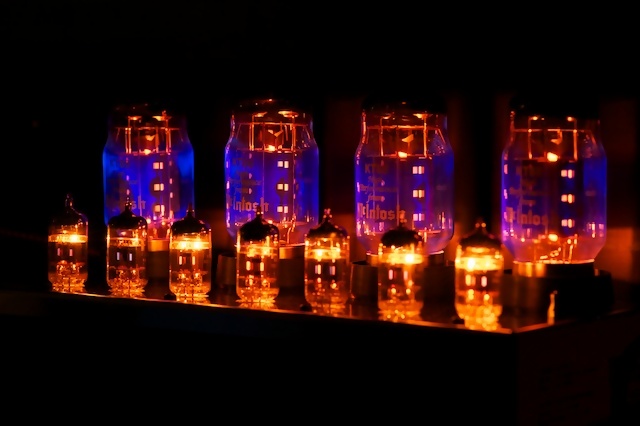
-
Triode

-
Tetrode
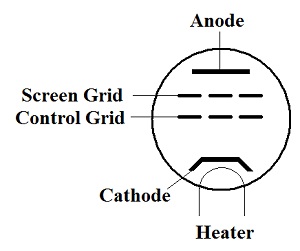
-
Pentode
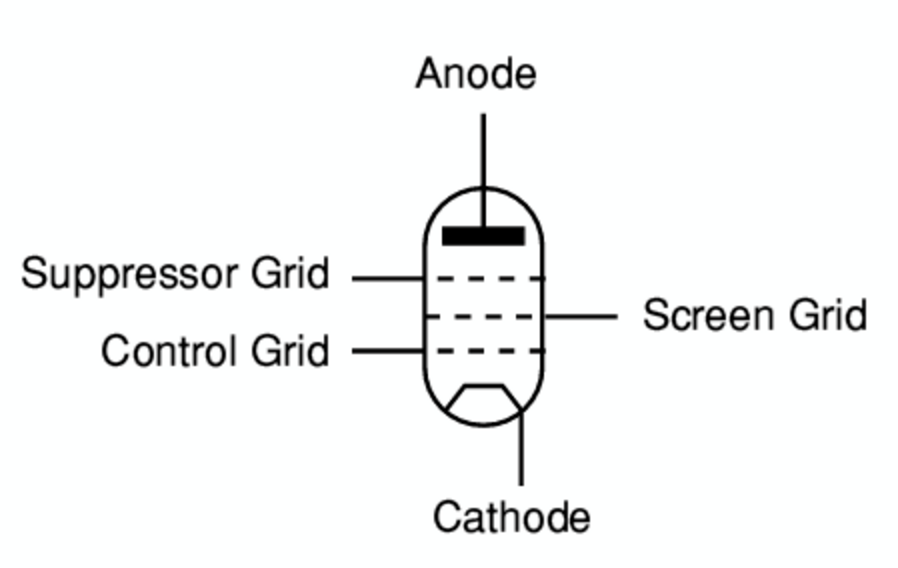
Graphs
-
Grid voltage

Notes
Diodes
- By heating a metal, electrons on the surface of the metal become very agitated and electrons will escape from its surface.
- A diode is constructed with two electrodes: anode and cathode (heater not included)
- Cathode is tied to ground.
- High voltage is applied to the anode of the tube (also called plate)
- Cathode is coated with Barium Oxide
- Cathode is heated by a filament (made of heating wire)
- Liberated negative electrons are attracted to the anode because it is at a positive potential
- Like a semiconductor diode, reversing the polarity of the diode blocks current flow since electrons will not escape from a positive cathode
Triodes
- To amplifiy, there has to be a means of controlling the flow of electrons from the cathode to the anode.
- This is achieved by adding a wire mesh (grid) between the cathode and the anode
- The grid is widely spaced so it does not “physically” impede the electron stream
- When a negative signal is applied to the grid, it will repel some of the negative electrons and therefore reducing electron flow from cathode to anode.
- Conversely, applying a positive signal to the gride causes more electrons to be attracted, and thus, more electrons reach the anode
- Thus, since applying a small current can control a larger current flow, the valve can thus amplify the signal.
- Such a tube with an anode, cathode and grid is called a triode.
Tetrodes
Issues with triodes
- The space between the cathode, anode and grid of a triode gives rise to interelectrode capacitance.
- This makes it not suitable for high frequency applications
- This also gives rises to feedback, which could lead to instability
-
Triode interelectrode capacitance:
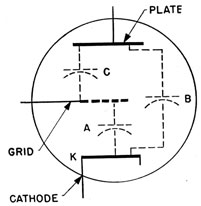
The solution:
- Placing another grid in between the anode and cathode helps reduce the interelectrode capacitance (series capacitance)
- This grid is called the screen grid.
- Usually tied to a high voltage in respect to the cathode.
- This enhances the attraction of electrons from the cathode to the anode as well.
- Leads to a higher gain.
- Tetrode configuration:
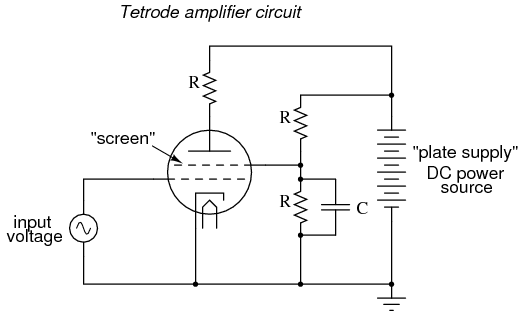
Pentodes
- You may be asking: “Why do we need so many different kinds of tubes?”
Issues with tetrodes:
- Remember how the screen grid helps enhance the attraction of electrons to the anode?
- At times, the electrons can have so much energy that when it hits the anode, that they dislodge electrons from its surface.
- This is called “secondary emission”
- Has a detrimental effect to gain.
- Impedes flow of current in the tube
The solution:
- Add another grid in between the cathode and anode =P
- Tied to cathode.
- Since cathode is more negative in respect to the anode, secondary emission of electrons is reduced.
- Part of amplifier circuit, using a pentode:
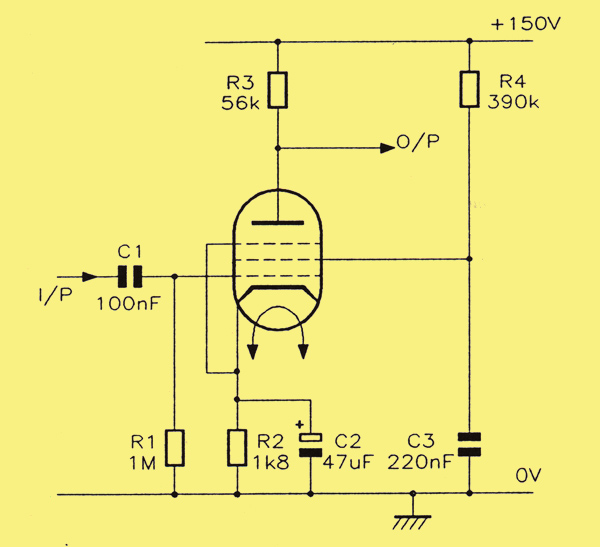
Example circuit (TODO: re-write or remove)
Advantages:
- A valve will withstand a certain amount of ‘mistreatment’ during tuning
- A valve is more easily matched to the aerial circuit
- A poor SWR will tolerated by a valve
Disadvantages:
- Requires a high voltage power supply
- Fragile; requires care when handling!
- Precautions necessary to avoid electric shock
- Valves wear out and require replacement which is likely to be expensive
- Less convenient for ‘mobile’ operation